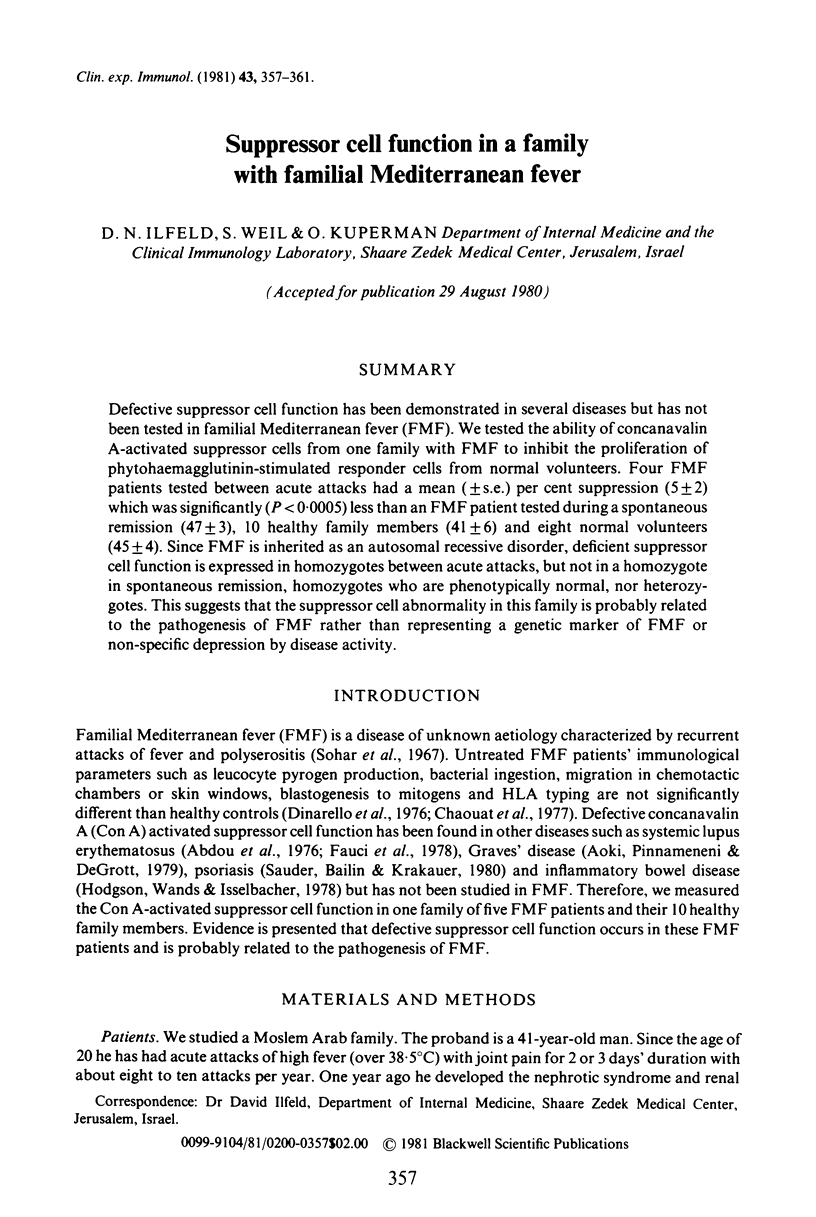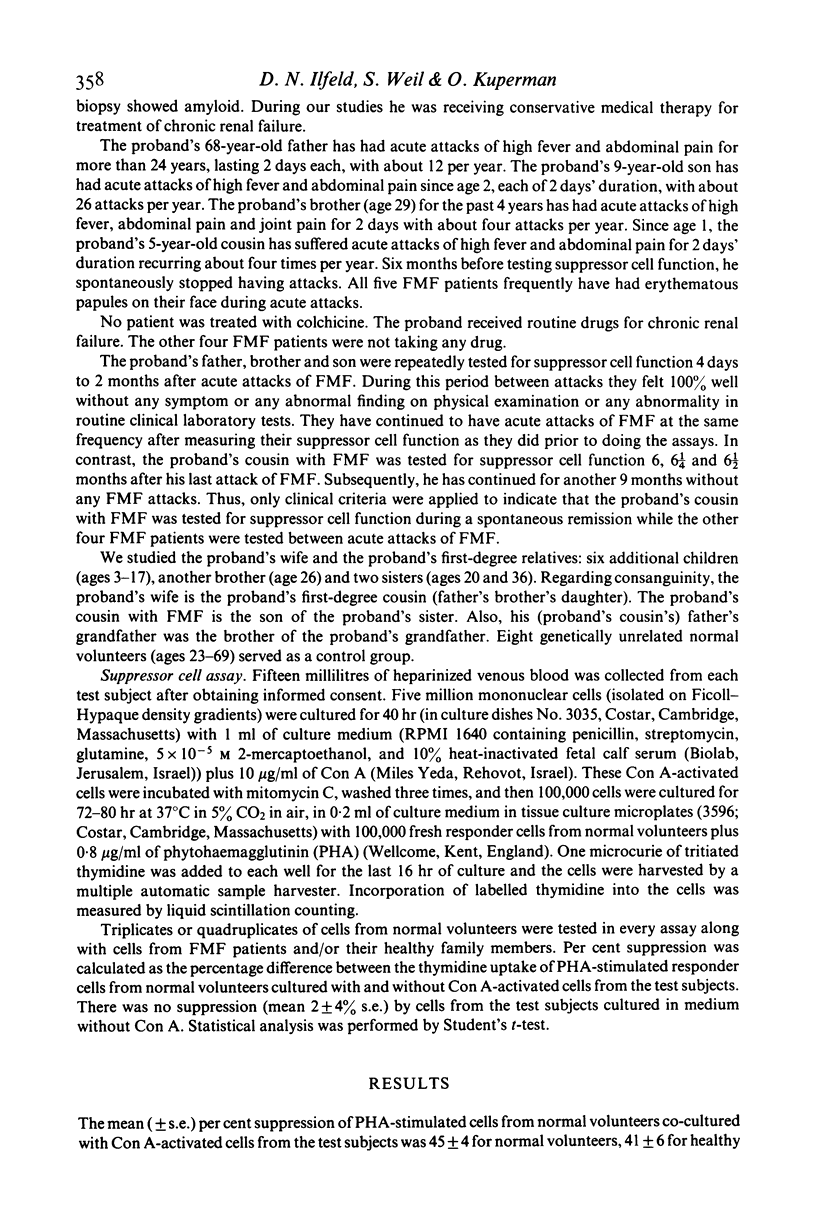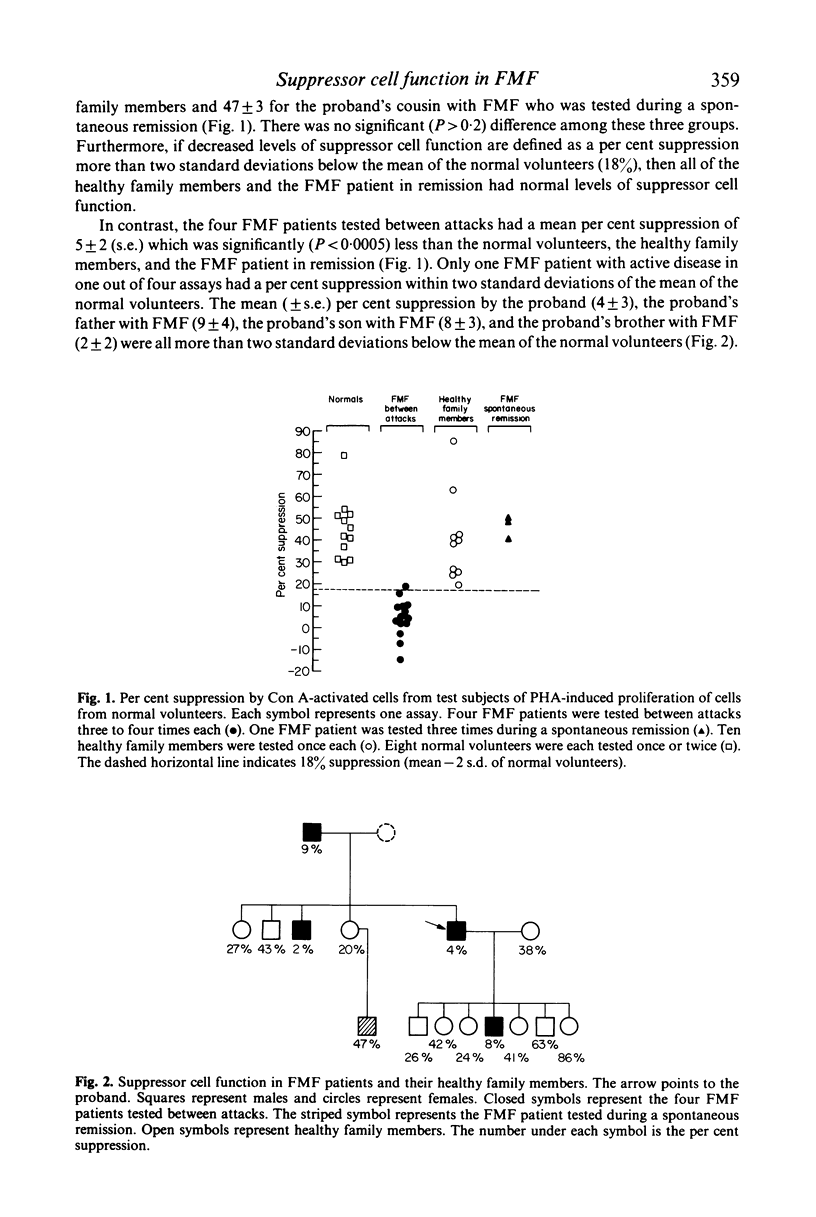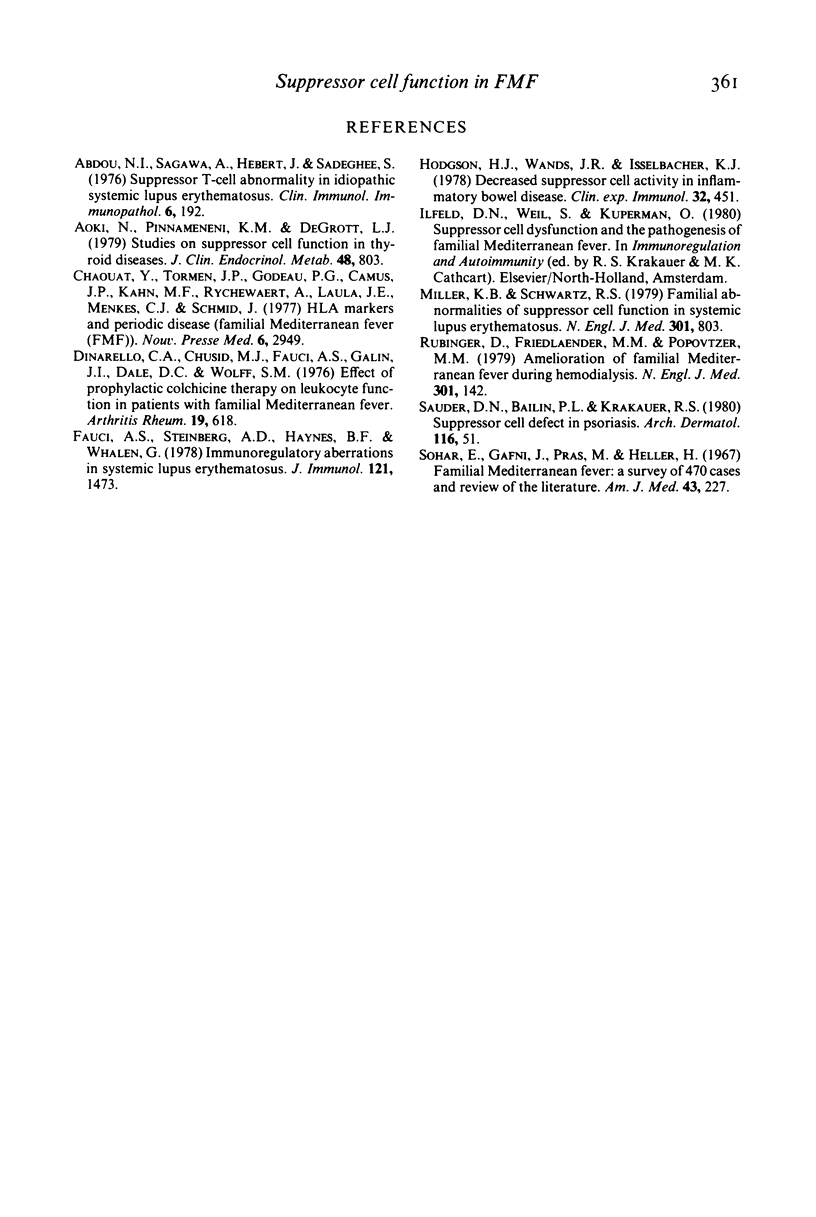Abstract
Defective suppressor cell function has been demonstrated in several diseases but has not been tested in familial Mediterranean fever (FMF). We tested the ability of concanavalin A-activated suppressor cells from one family with FMF to inhibit the proliferation of phytohaemagglutinin-stimulated responder cells from normal volunteers. Four FMF patients tested between acute attacks had a mean (+/- s.e.) per cent suppression (5 +/- 2) which was significantly (P less than 0.0005) less than an FMF patient tested during a spontaneous remission (47 +/- 3), 10 healthy family members (41 +/- 6) and eight normal volunteers (45 +/- 4). Since FMF is inherited as an autosomal recessive disorder, deficient suppressor cell function is expressed in homozygotes between acute attacks, but not in a homozygote in spontaneous remission, homozygotes who are phenotypically normal, nor heterozygotes. This suggests that the suppressor cell abnormality in this family is probably related to the pathogenesis of FMF rather than representing a genetic marker of FMF or non-specific depression by disease activity.
Full text
PDF




Selected References
These references are in PubMed. This may not be the complete list of references from this article.
- Abdou N. I., Sagawa A., Pascual E., Hebert J., Sadeghee S. Suppressor T-cell abnormality in idiopathic systemic lupus erythematosus. Clin Immunol Immunopathol. 1976 Sep;6(2):192–199. doi: 10.1016/0090-1229(76)90110-0. [DOI] [PubMed] [Google Scholar]
- Aoki N., Pinnamaneni K. M., DeGroot L. J. Studies on suppressor cell function in thyroid diseases. J Clin Endocrinol Metab. 1979 May;48(5):803–810. doi: 10.1210/jcem-48-5-803. [DOI] [PubMed] [Google Scholar]
- Chaouat Y., Tormen J. P., Godeau P., Camus J. P., Kahn M. F., Ryckewaert A., Laula J. E., Menkes C. J., Schmid M., Hors J. Marqueurs HLA chez les sujets atteints de maladie périodique (fièvre familiale méditerranéenne). Nouv Presse Med. 1977 Oct 8;6(33):2949–2953. [PubMed] [Google Scholar]
- Dinarello C. A., Chusid M. J., Fauci A. S., Gallin J. I., Dale D. C., Wolff S. M. Effect of prophylactic colchicine therapy on leukocyte function in patients with familial Mediterranean fever. Arthritis Rheum. 1976 May-Jun;19(3):618–622. doi: 10.1002/art.1780190315. [DOI] [PubMed] [Google Scholar]
- Fauci A. S., Steinberg A. D., Haynes B. F., Whalen G. Immunoregulatory aberrations in systemic lupus erythematosus. J Immunol. 1978 Oct;121(4):1473–1479. [PubMed] [Google Scholar]
- Hodgson H. J., Wands J. R., Isselbacher K. J. Decreased suppressor cell activity in inflammatory bowel disease. Clin Exp Immunol. 1978 Jun;32(3):451–458. [PMC free article] [PubMed] [Google Scholar]
- Miller K. B., Schwartz R. S. Familial abnormalities of suppressor-cell function in systemic lupus erythematosus. N Engl J Med. 1979 Oct 11;301(15):803–809. doi: 10.1056/NEJM197910113011502. [DOI] [PubMed] [Google Scholar]
- Rubinger D., Friedlaender M. M., Popovtzer M. M. Amelioration of familial Mediterranean fever during hemodialysis. N Engl J Med. 1979 Jul 19;301(3):142–144. doi: 10.1056/NEJM197907193010306. [DOI] [PubMed] [Google Scholar]
- Sohar E., Gafni J., Pras M., Heller H. Familial Mediterranean fever. A survey of 470 cases and review of the literature. Am J Med. 1967 Aug;43(2):227–253. doi: 10.1016/0002-9343(67)90167-2. [DOI] [PubMed] [Google Scholar]
- Suader D. N., Bailin P. L., Sundeen J., Krakauer R. S. Suppressor cell function in psoriasis. Arch Dermatol. 1980 Jan;116(1):51–55. doi: 10.1001/archderm.116.1.51. [DOI] [PubMed] [Google Scholar]


